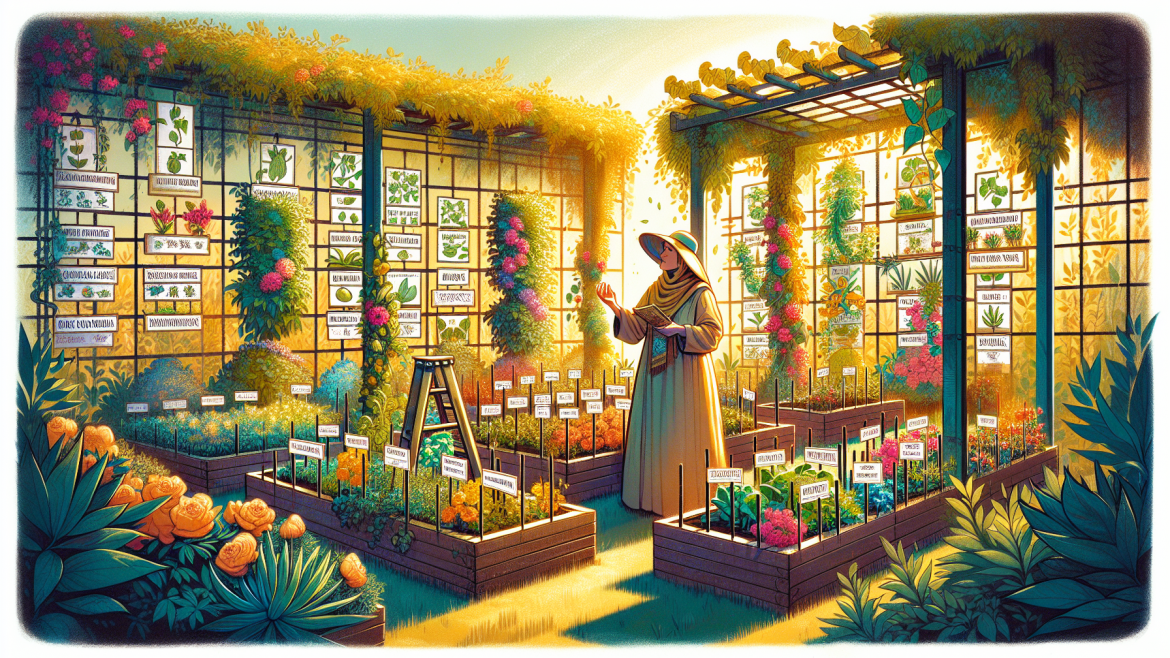Vines are an excellent addition to any garden, offering lush greenery, vibrant flowers, and sometimes even delicious fruits. These versatile plants can transform walls, fences, pergolas, and trellises, adding height and depth to your garden design. Whether you’re looking for fast-growing coverage or a more delicate and ornamental touch, there is a vine to fit your needs. Here, we explore some of the best vines for your garden and offer tips for growing them successfully.
Clematis
Clematis is one of the most popular garden vines, known for its stunning and often large flowers. These perennials can bloom in a variety of colors, from whites and pinks to rich purples and blues. Clematis plants thrive in well-drained soil and prefer a sunny location with some afternoon shade.
Growing Tips for Clematis
- Planting: Plant clematis slightly deeper than you would most plants, about 2-3 inches below the soil surface to protect the base of the stems and encourage healthy growth.
- Support: Provide a sturdy support structure like a trellis or arbor. Clematis vines are ‘climbers’ that use their stems to twist around supports.
- Pruning: Pruning clematis varies with the type. Some need annual pruning, while others only require minimal trimming. Ensure you know your specific type for optimal care.
Wisteria
Wisteria is another breathtaking choice, commonly used to grace pergolas and walls with its hanging clusters of blue, purple, white, or pink flowers. These vigorous growers are perfect for large spaces and can provide dramatic, cascading floral displays.
Growing Tips for Wisteria
- Planting: Plant wisteria in fertile, moist, but well-drained soil. Ensure it gets full sun for best blooming.
- Support: Provide very strong support as wisteria can become quite heavy. Sturdy trellises or pergolas are recommended.
- Pruning: Prune wisteria regularly to control its size and shape. Prune twice a year – once in summer, cutting back the lankier growth, and again in winter, pruning harder for shape and size.
Honeysuckle
Honeysuckle is beloved for its sweetly scented flowers that attract hummingbirds and bees. The blooms come in various shades, including yellow, orange, red, and pink. This vine is relatively easy to grow, making it a favorite among gardeners.
Growing Tips for Honeysuckle
- Planting: Plant honeysuckle in well-drained soil and provide full sun to partial shade.
- Support: Honeysuckle vines need a structure to climb, such as a fence, trellis, or pergola.
- Watering: Keep the soil consistently moist but not waterlogged, especially during the first season of growth.
- Pruning: Prune immediately after flowering to maintain shape and encourage new growth.
Jasmine
Jasmine is cherished for its intensely fragrant flowers that can add a romantic touch to any garden. The white or yellow blooms are often used in perfumes and teas for their delightful scent. Jasmine can be grown as either a shrub or a climbing vine, making it a versatile choice.
Growing Tips for Jasmine
- Planting: Plant jasmine in well-drained soil and a sunny spot, with some afternoon shade to protect it from scorching.
- Support: Use a trellis or similar support to help the vine grow upwards.
- Watering: Water regularly, especially during dry periods, but avoid waterlogging the soil.
- Pruning: Prune jasmine after the blooming period to retain its shape and support healthy growth.
Passionflower
Passionflower vines produce some of the most exotic flowers you can find, with intricate patterns and vibrant colors. In addition to their ornamental value, many varieties also produce edible fruits. Commonly grown in warm climates, passionflowers can be a stunning focal point in any garden.
Growing Tips for Passionflower
- Planting: Plant in well-drained soil and in a location that receives full sun to partial shade.
- Support: Provide a trellis or fence for the vine to climb.
- Watering: Water regularly, ensuring the soil stays moist but not soggy.
- Pruning: Prune after flowering to maintain size and encourage bushier growth.
Conclusion
Adding vines to your garden can bring vertical interest, fragrance, and beauty, transforming your outdoor space. By selecting the right vine and following these growing tips, you can enjoy a flourishing garden with minimal effort. Whether you’re looking to cover a fence with lush greenery or adorn a pergola with fragrant blooms, there is a perfect vine waiting to thrive in your garden.
